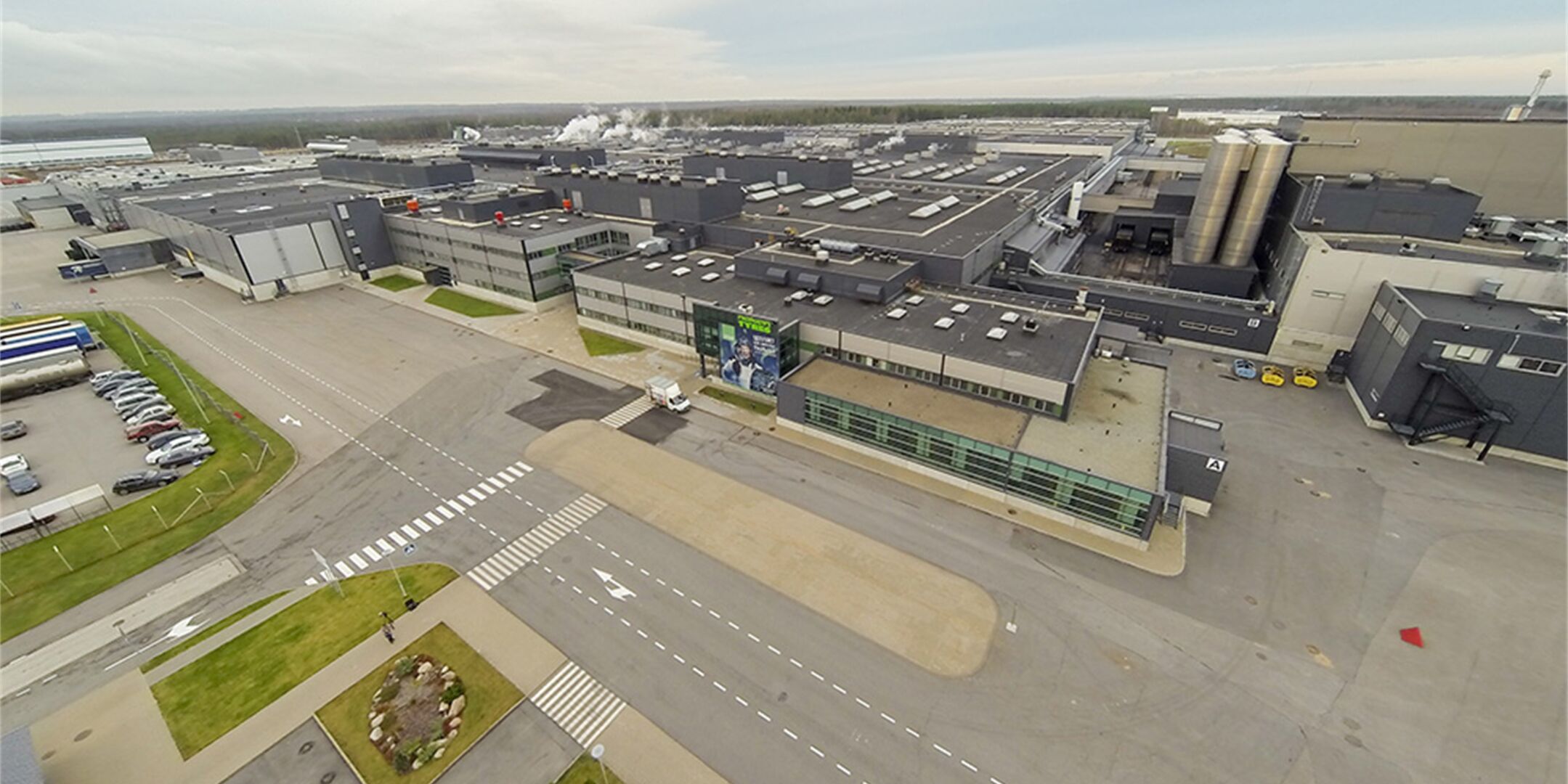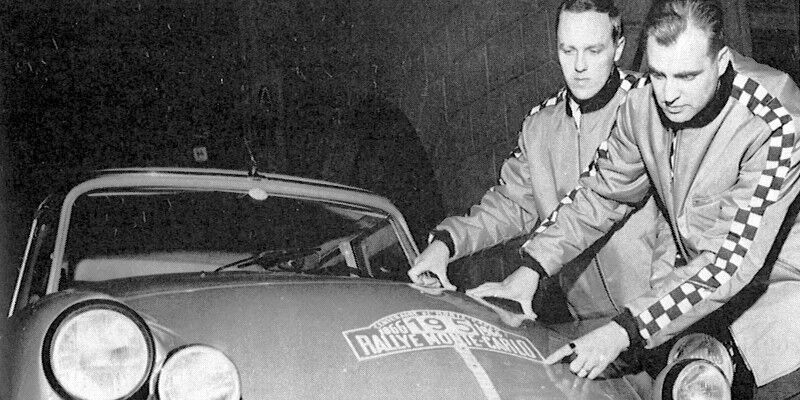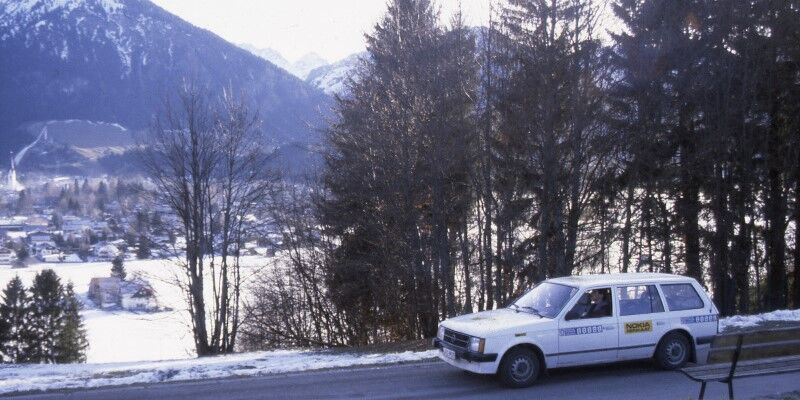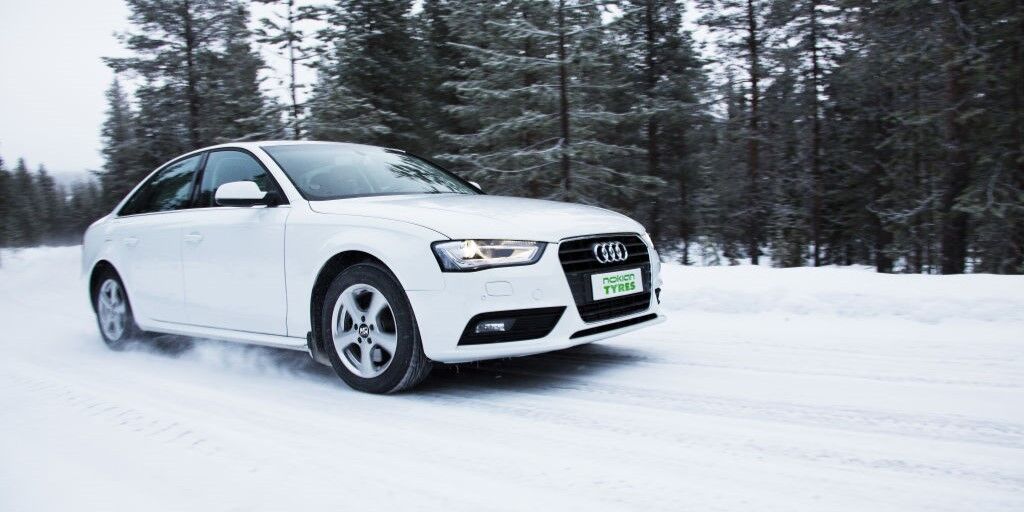Article
From Nokia, for the world
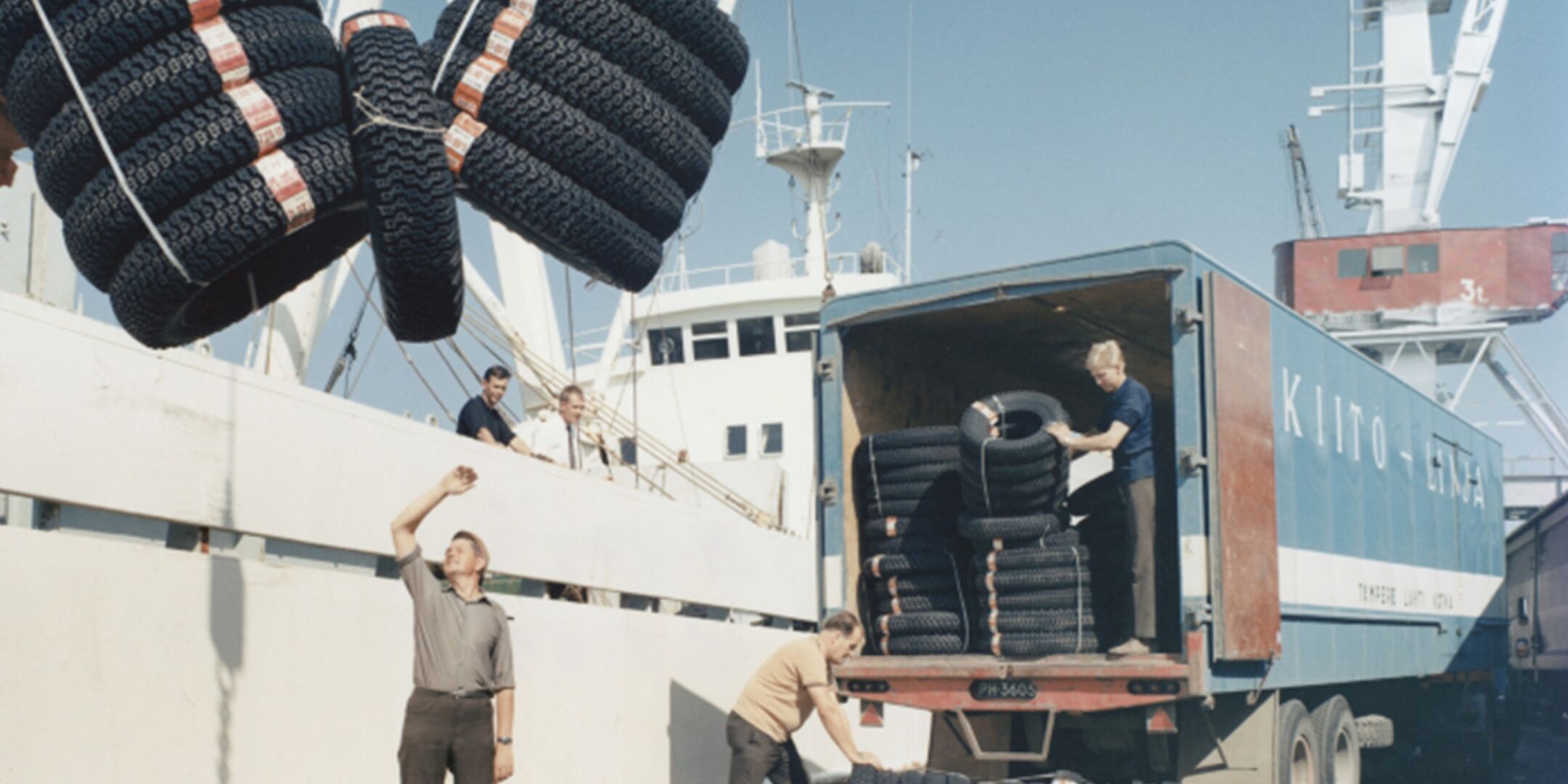
The international journey of the Finnish winter tire started soon after the first Hakkapeliittas were made. At first, international sales were experimental, but contact was made with several European countries. After World War II, Hakkapeliittas were widely used throughout the Nordic countries, and in the 1960s, the conquest of new continents started.
Suomen Gummitehdas was an exporter from the beginning. With the help of export agents, contacts were established with the Baltic countries and Romania, Hungary and Switzerland. Representation in Sweden had already been established in 1900. An export manager was appointed in 1927.
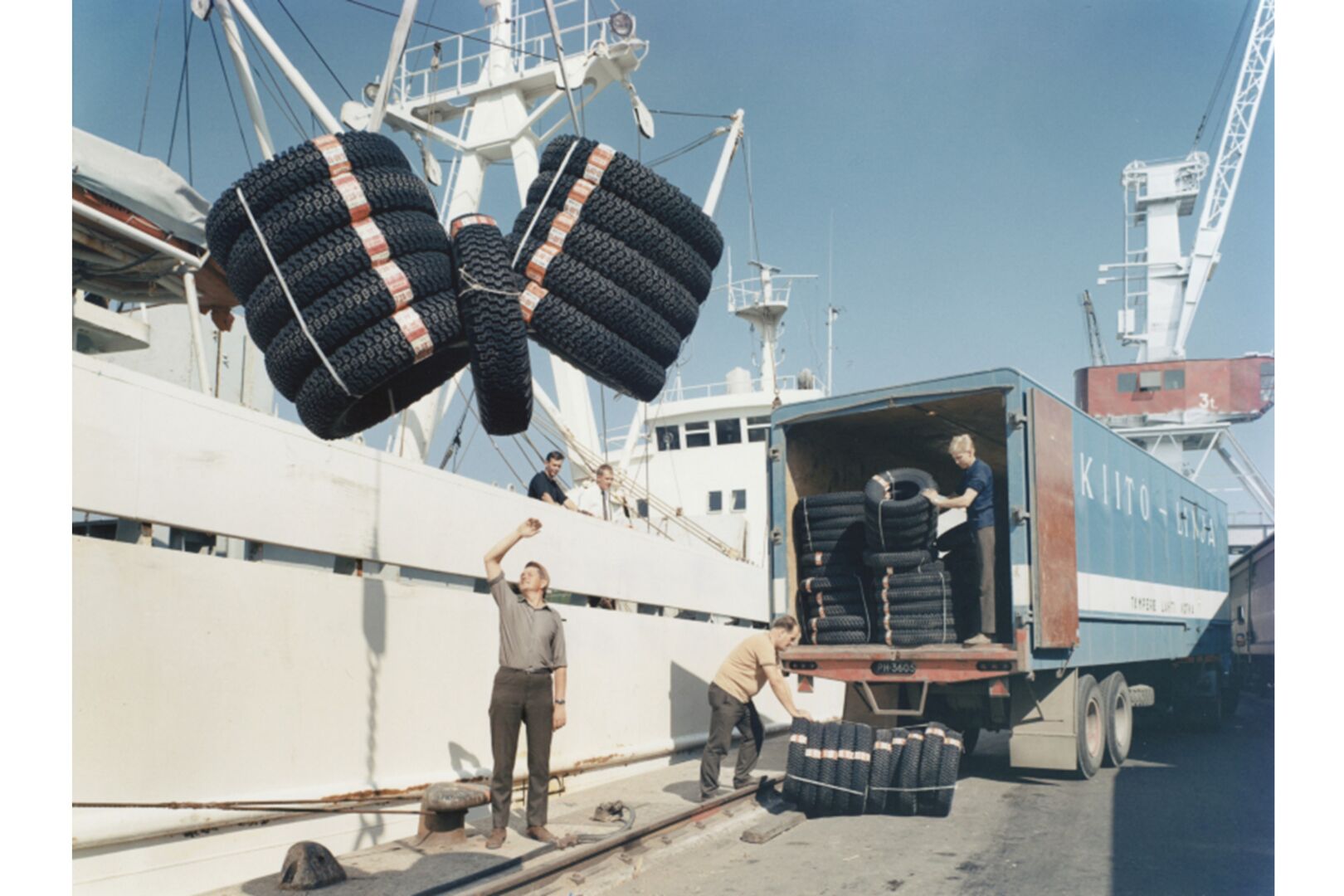
Towards Europe
The first international tire deliveries were made to the Baltic countries.
In the 1930s, Hakkapeliittas were exported along with other technical rubber merchandise, first to Scandinavia and Estonia. Tires from Nokia could be found in the Tallinn sales catalogue of Teknillinen Kauppaosakeyhtiö (Technical Sales Company). As the war approached, exports were limited. The Winter War and Continuation War effectively stopped exports from Gummitehdas.
After the war ended, Suomen Gummitehdas quickly established relations with Great Britain and the United States for machinery and material supplies. Export contracts for winter tires into Denmark were signed in 1948. Sales only started properly in 1949, when the company was present at the St. Erik’s trade fair in Stockholm and an exhibition in Copenhagen. In the words of the Gummitehdas annual report, “Hakkapeliittas achieved great acclaim.”
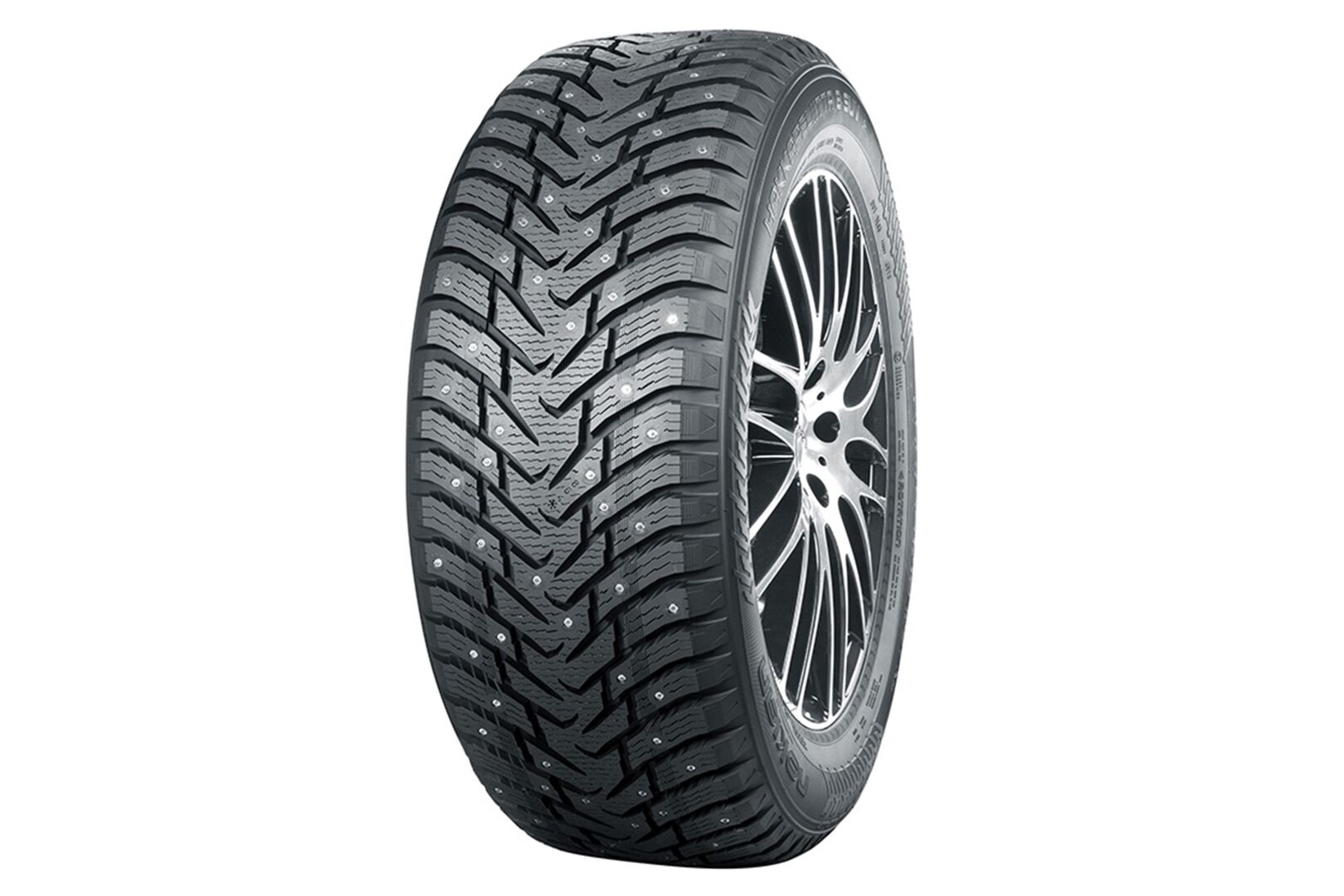
Hakkapeliitta 8
Nokian Hakkapeliitta 8 SUV winter tire. SUV tires were a growing product segment.
Export takes flight
There was still widespread uncertainty on the international market in the 1950s. Sweden and the other Nordic countries became the main export destinations for tires. The subsidiary Finska Gummi Ab, which was established in Sundsvall, Sweden in 1959, sold 8,500 Hakkapeliittas in its first year. This indicated a new beginning for internationalisation, as this was the first time exports are separately mentioned in the company's annual report. By 1960, products were already being exported to eight countries.
Hakkapeliitta was the powerhouse of international sales. In 1963, the share of tires of the entire exports of the company was forty per cent. Exports to the Soviet Union started in 1964. Studded Hakkapeliittas were shipped for use in luxury cars in Leningrad and Moscow. Sweden was still the leading export destination with 36,000 tires each year. Norway and Britain joined in, and by 1968, products were exported to 20 countries. Export figures more than doubled towards the end of the decade. USA became a new, important partner.
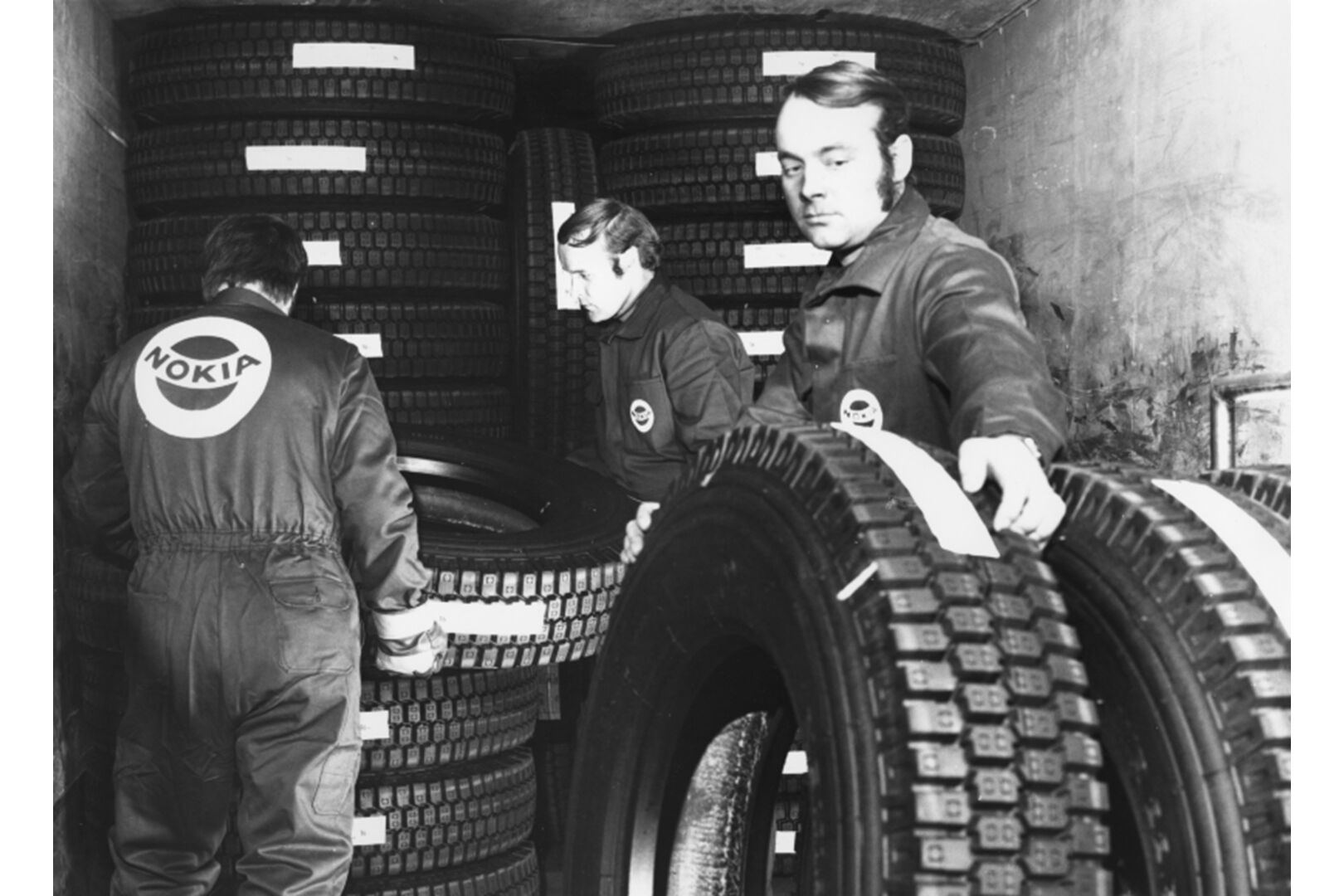
Go West
Lorry tires being loaded for North America in 1967.
Broadly international
The breakthrough of the radial tire in the 1970s signified new opportunities. The export of radial tires into Great Britain started in 1972. The sales of heavy tires increased in particular. Tractor tires were supplied to Valmet in Brazil. The oil crisis and the recession of the automotive industry made tire sales challenging. Export activity was increased, and a market for steel belted tires was found in the United States in particular. A subsidiary called Norsk Traktorkompani A/S was established in Norway in 1978. In Europe, the partners were Austria, Ireland and the Netherlands. By the end of the decade, Hakkapeliittas were also being sold to Canada, Greenland and Japan.
Half of Nokia’s tire production was exported in the 1980s. The Hakkapeliitta NR 09 became the leading product. In 1983, 330,000 Hakkapeliittas were sold abroad. The subsidiary Nokia Products Ltd, established in Toronto in 1980, supplied forestry machine tires to Canada. In Scandinavia, Hakkapeliitta tripled its market share within a decade. In Norway, the company purchased the retail chain Wullm Dekk A/S.
The use of winter tires gained popularity in Western Europe in the 1990s, which increased the sales of Hakkapeliittas. In 1996, three out of four passenger car and van tires made in Nokia were being sold abroad. At the end of the 1990s, Nokian Tyres became the leading tire manufacturer in the Nordic countries, with exports to fifty countries.

From the logistics centre into the world
Nearly 30% of winter tires are sold within approximately 10 days of the first snowfall, which poses an enormous challenge for effective logistics and supplementary deliveries in particular.
Modern facilities in Finland and the US
Nokian Tyres’ production facilities are located in Finland and the US. Product development and the manufacture of prototypes and test batches are located in Nokia next to the company’s headquarters. The Nokia factory manufactures passenger car tires, heavy tires and retreading materials for truck tires.
In the 2010s, Nokian Tyres' key markets for winter tires were in the Nordic countries, Russia and other CIS countries, North America and Central and Eastern Europe. Expertise in northern conditions is required wherever snow and ice appear on the roads. In 2015, winter tires accounted for 73% of the sales of the world's northernmost tire manufacturer. Especially SUV tires have become even more important than before.
On June 29, 2022, Nokian Tyres plc initiated a controlled exit from Russia. The company has continued to increase capacity at its factories in Finland and in the US, and has decided to invest in completely new capacity in Europe.
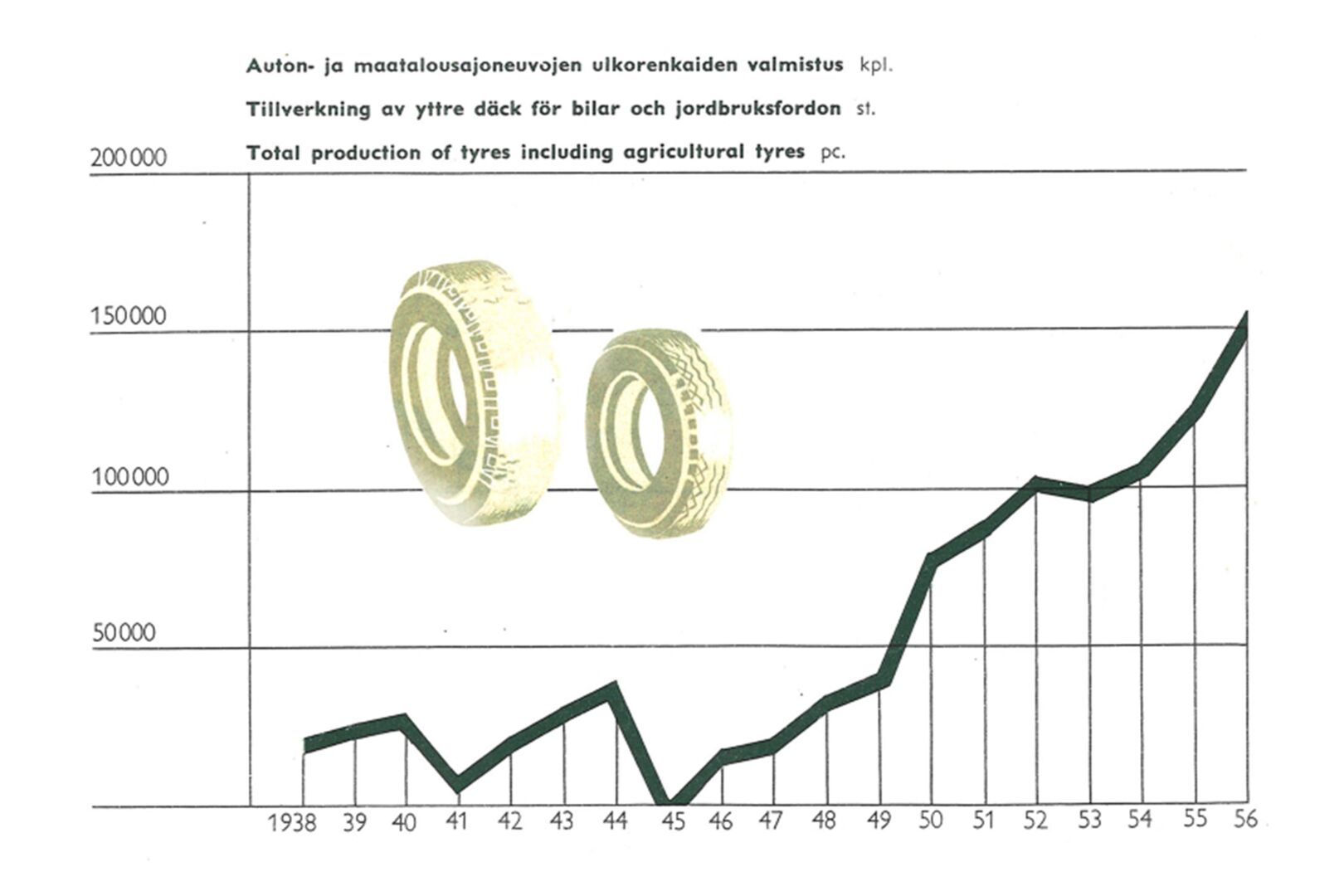
Up and away
Production of car and agricultural vehicle tires from 1938 to 1956.
